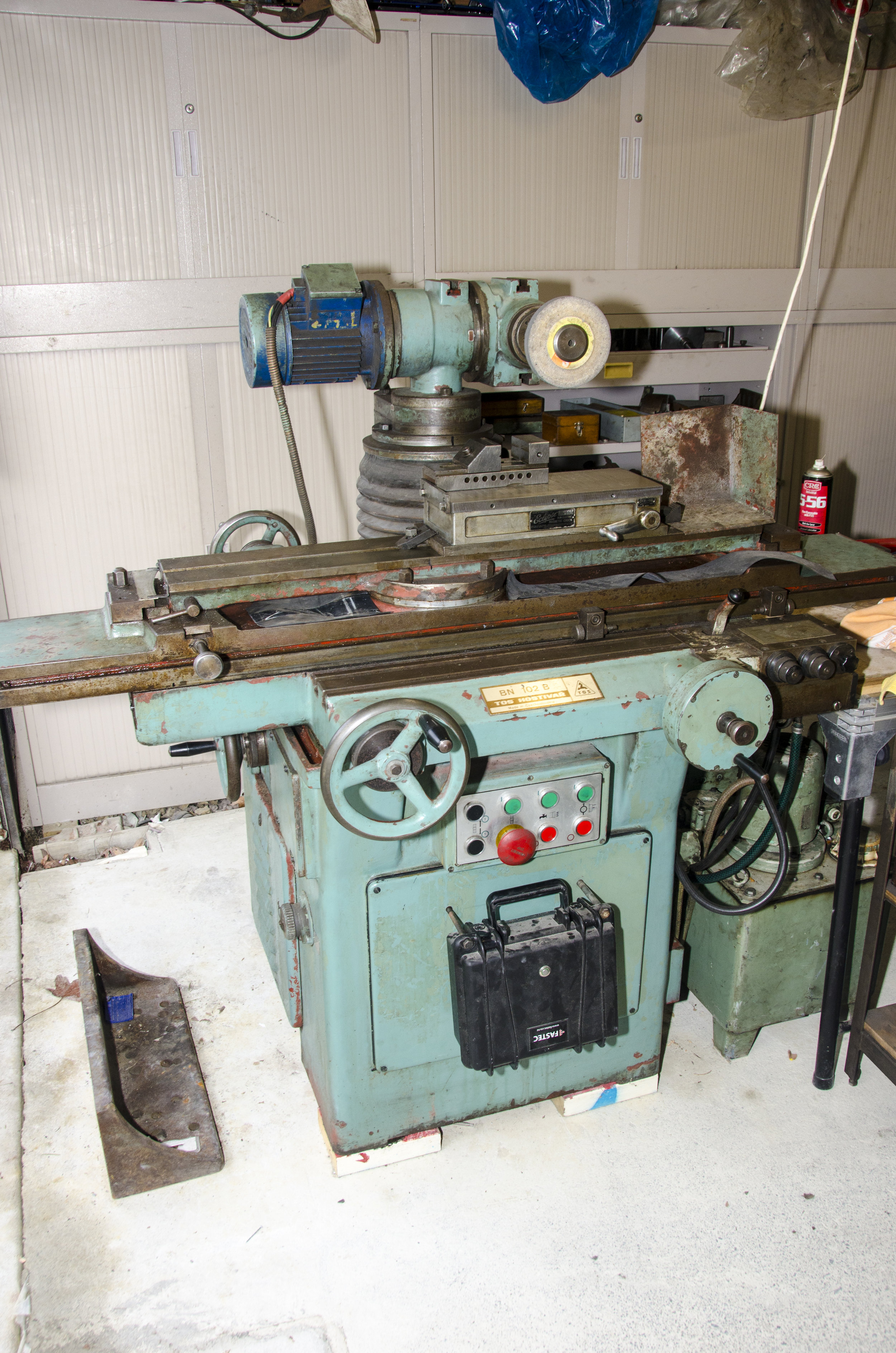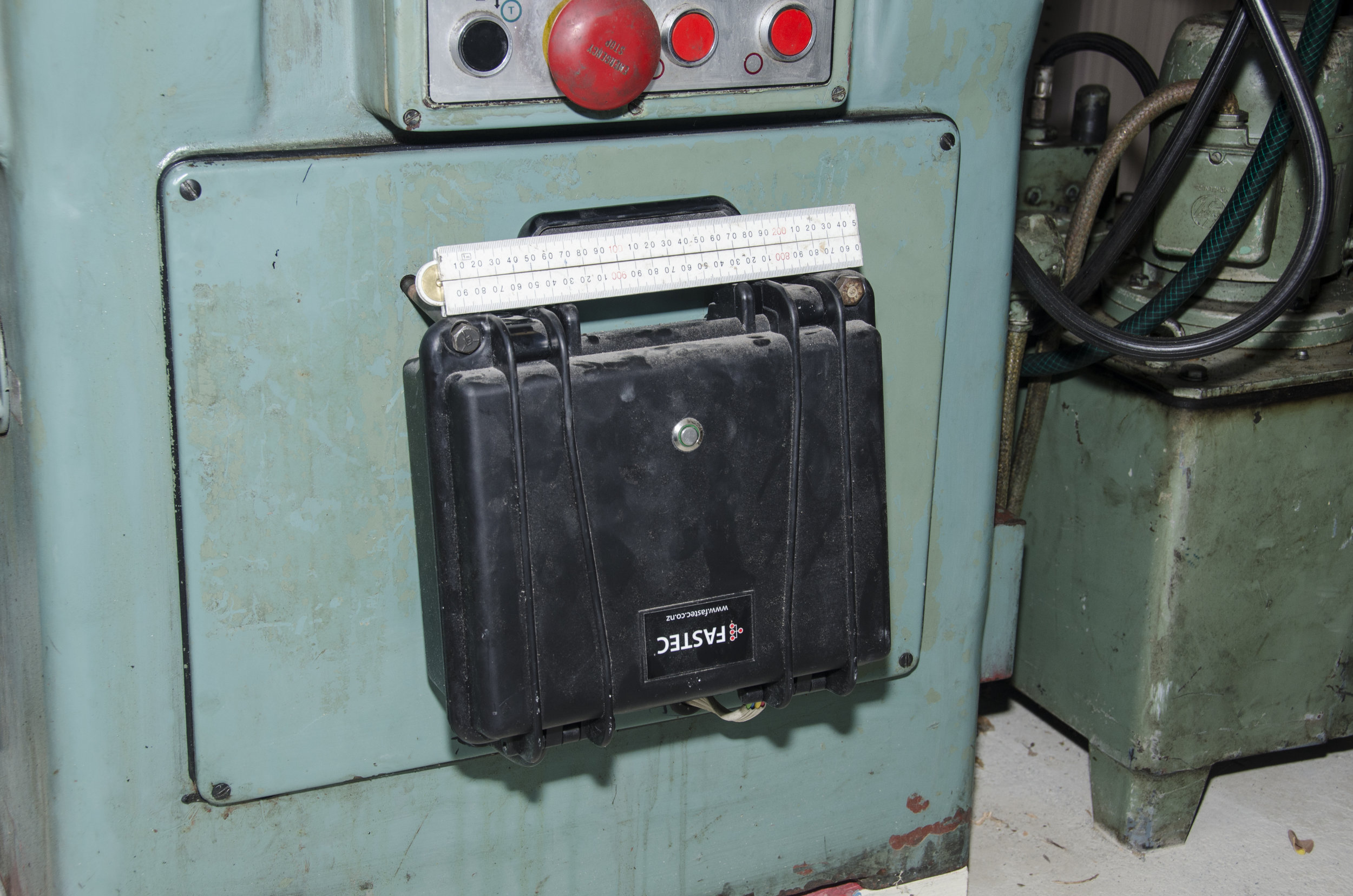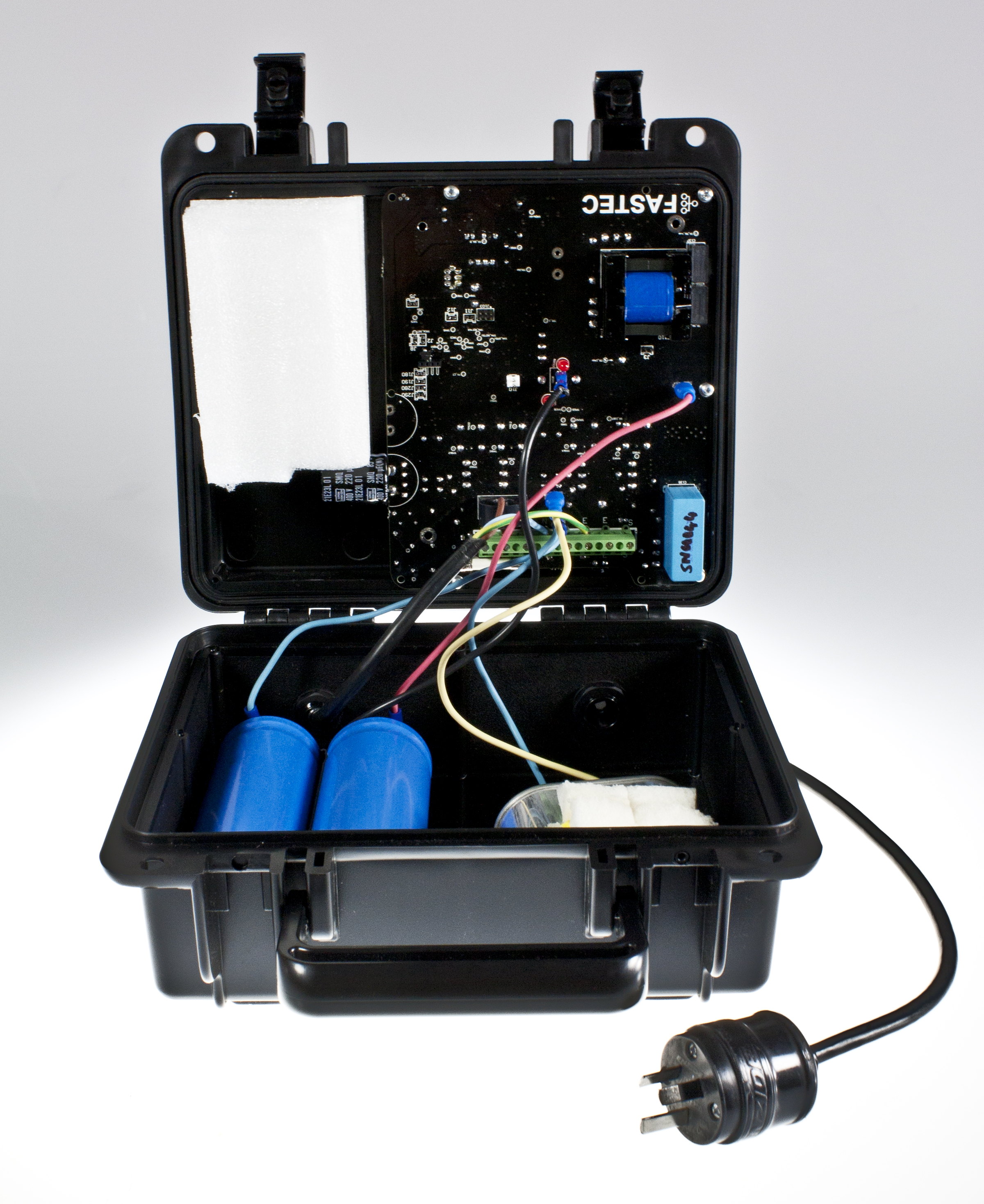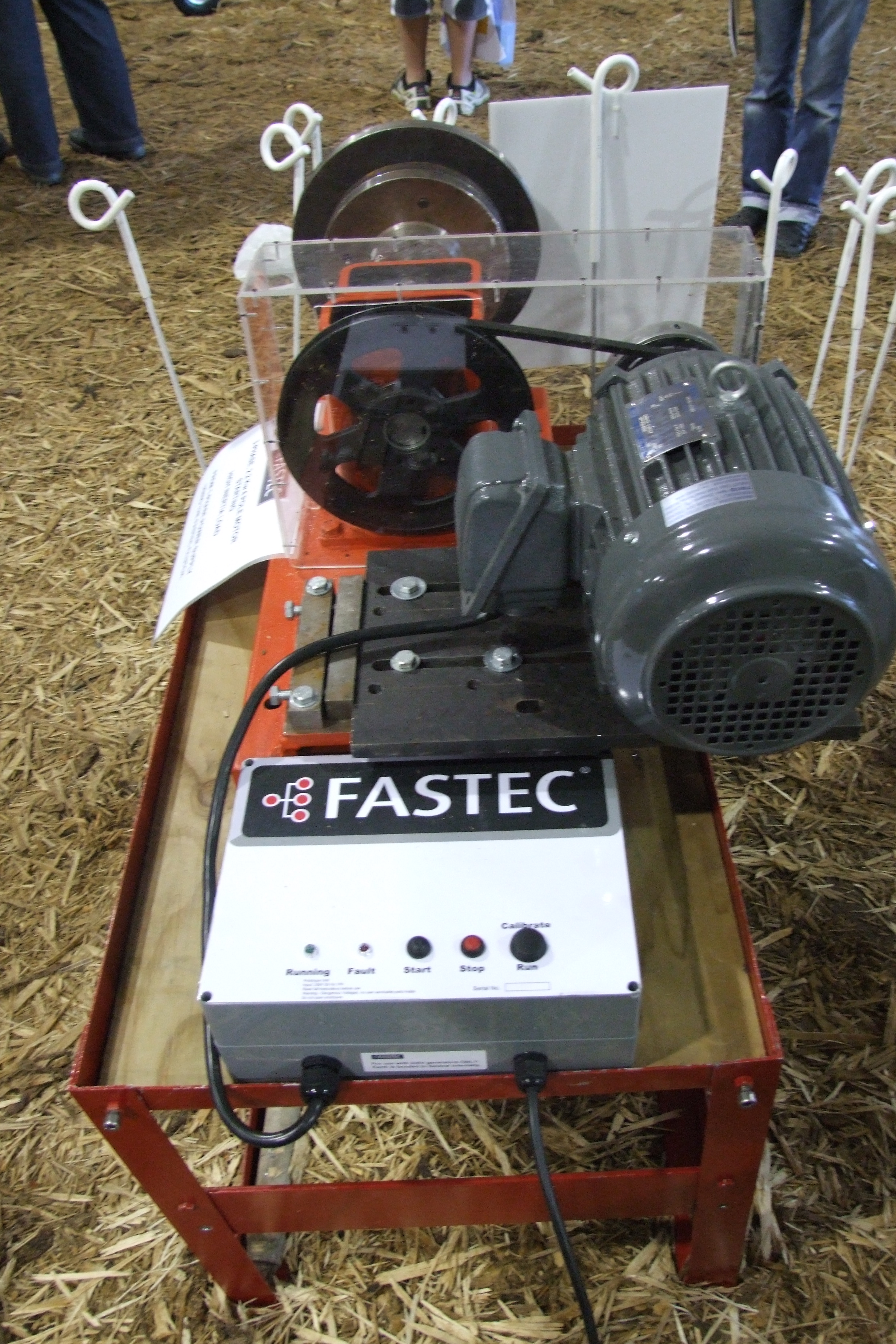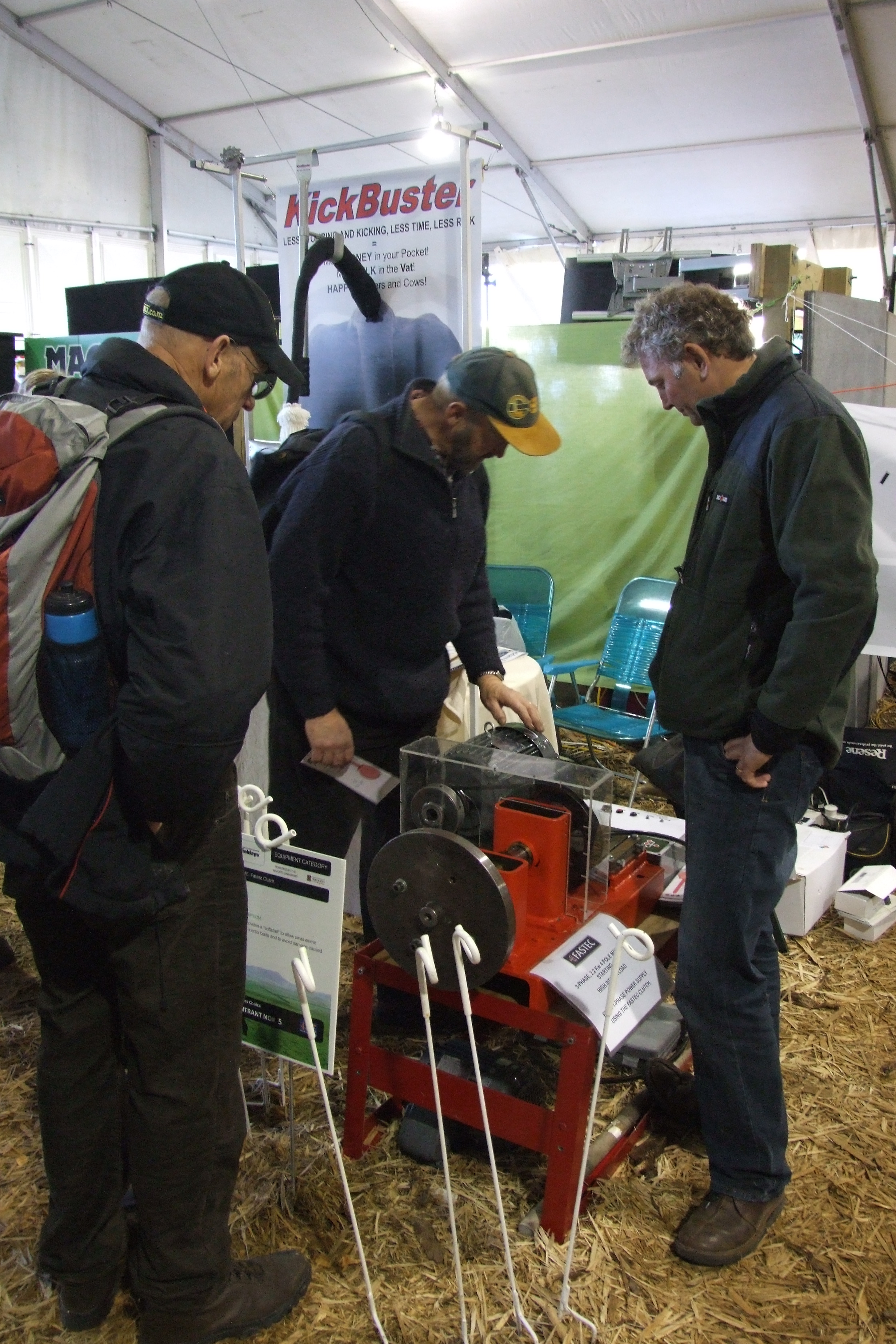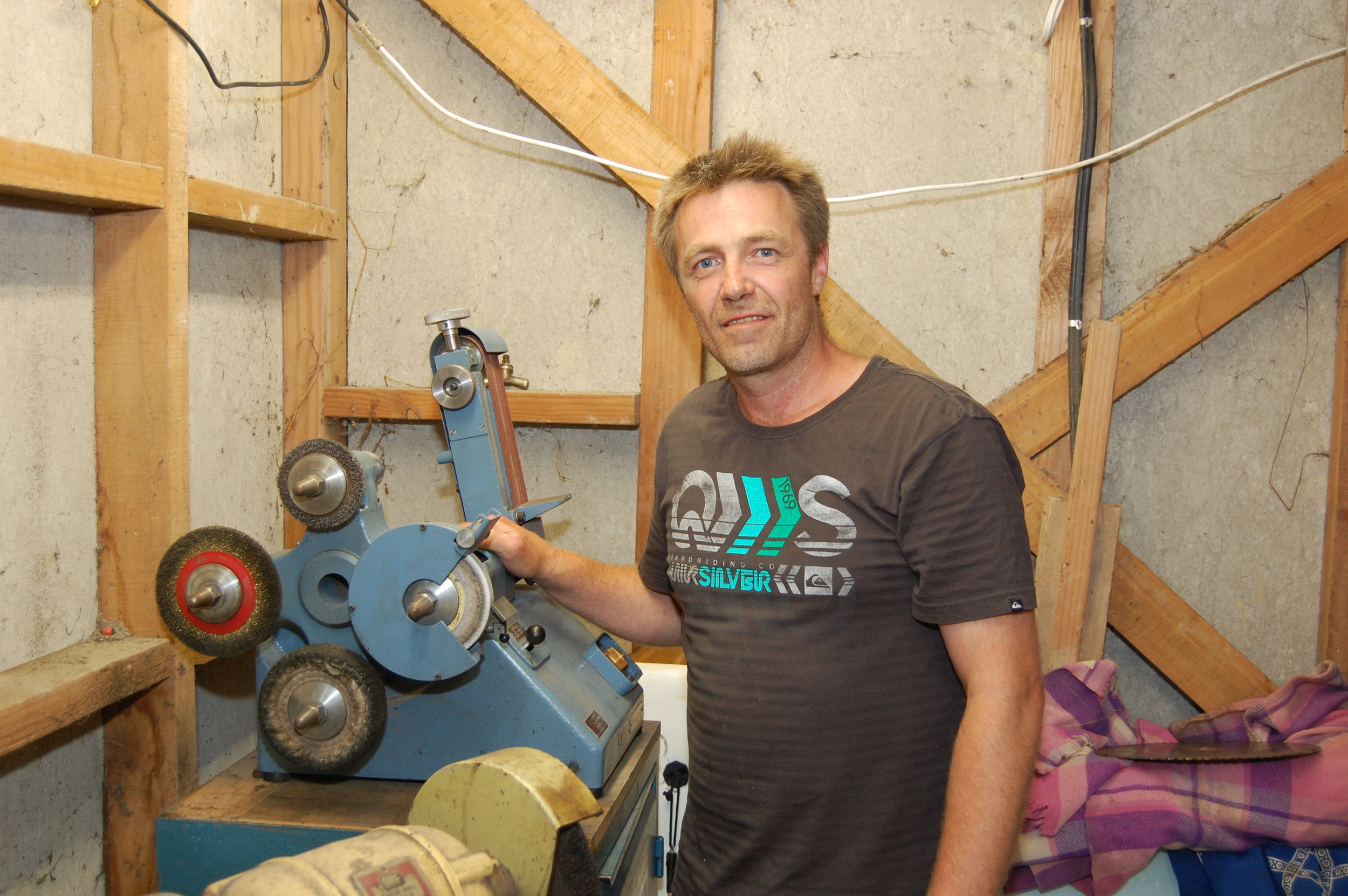A KIWI INVENTION POWERS UP
When a friend at Metpresco Engineering offered Jason Clarke an old, universal tool and cutter grinder for his garage workshop, Jason had to think about how he could power it. The machine had five (yes, 5) threephase motors wired in a mixture of wye (star) and delta powering: • the main spindle, • internal grinding spindle, • hydraulics, • coolant pump, and • vertical axis. It was looking like a very expensive exercise to get it running on Jason’s single-phase home supply. Three-phase motors are smaller, cheaper and more efficient than single-phase motors of the same power. They also offer greater reliability and smoother running. It was impractical to replace the existing motors with single-phase motors and getting three-phase mains supply was going to cost more than the machine. Using variable speed drives (VSD) would have required a lot of re-wiring. A single to three-phase converter with enough power to start the grinder was expensive. Things were looking a bit hopeless until Jason came across Fastec, makers of the Fastec Start. Designed and manufactured in New Zealand, the device can cleverly optimise a lowcapacity, single-phase power supply to enable starting and running of three phase motors. After inspecting and testing the machine on site at Metpresco Engineering and evaluating the particular problems with the machine, Fastec installed a 400V transformer and adapted a single Fastec Start unit to run all motors. This solution allowed Jason to keep all the original wiring and controls with the only visible difference being the Fastec box bolted on the front. The starting procedure has been slightly changed, but otherwise it operates as if it had a normal three-phase power supply. To start it, the mains power is turned on and the start button for the hydraulic motor is pressed. Nothing happens. The start button on the Fastec box is then pressed and the button flashes while the capacitors inside charge up. About four seconds later, the capacitors are triggered and the motor kicks into life. As soon as the hydraulic motor is running, all other motors can be operated as normal. The efficiency of the system is very high with almost no power loss from the unit. To establish whether a motor can be started by the Fastec Start, installers can operate it in a calibration mode to test that the power current supplied by the capacitor creates a big enough kick to get the motor up to speed. For large motors that are usually started under load, Fastec have developed an adjustable centrifugal clutch that engages as the motor reaches operating speed to reduce inertia at start-up. Director of Fastec, Malcolm Woods, sees the Fastec Start being useful in areas where the available power is marginal for running three-phase motors. Examples include home workshops, farms, remote locations with limited power or where generators are used. For example: a 2.2kW three-phase motor may require up to a 10kW three-phase generator to start it. The same motor with a Fastec Start can be started and run with a 4kW single-phase generator that costs a fraction of the price.
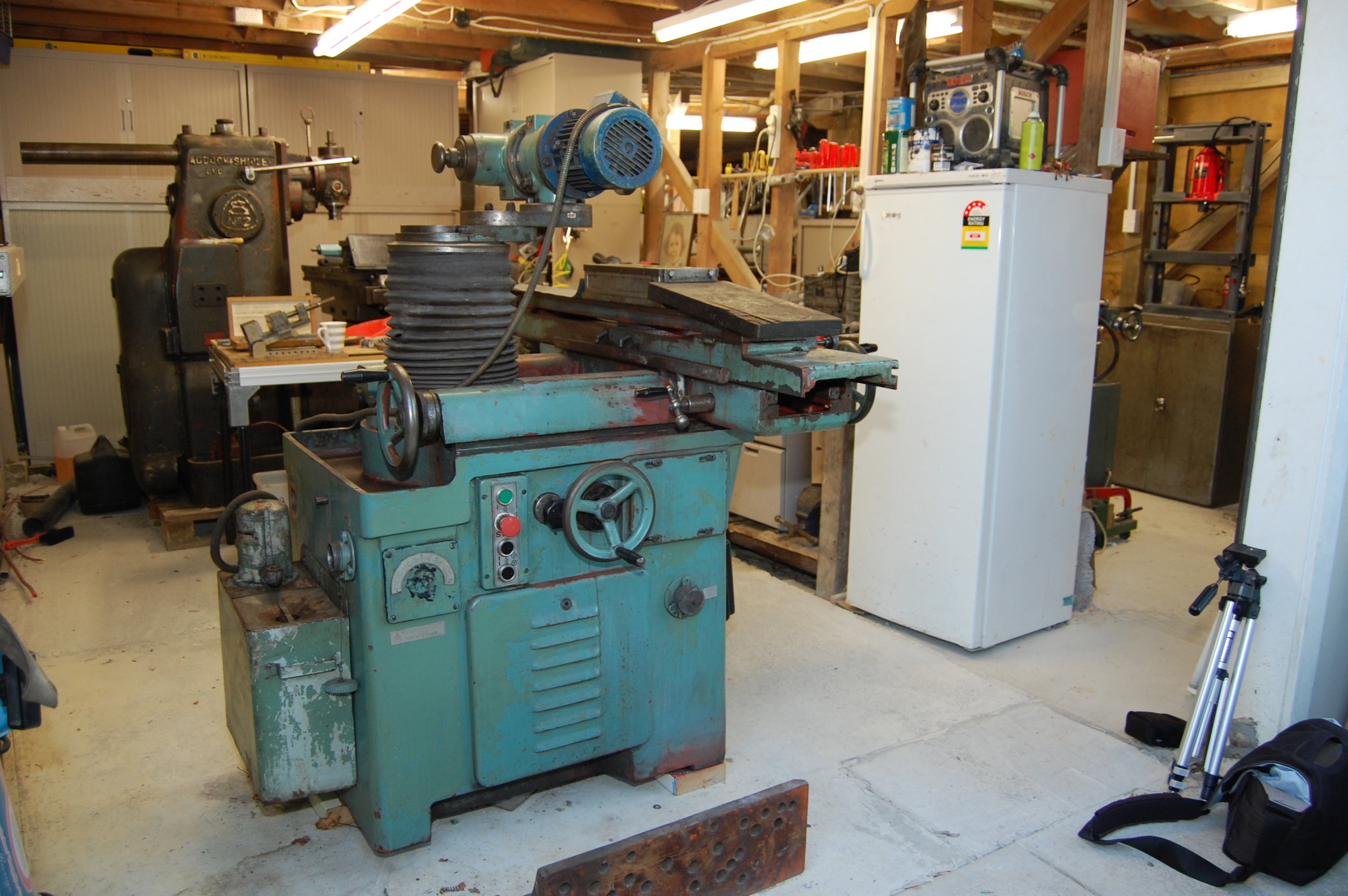
Home workshop
To take advantage of the benefits of three-phase motors and the generally cheaper price of second-hand, three-phase machinery, shed or home workshop owners with only single-phase power have several options:
1. Replace the motor with a single-phase motor;
2. Get three-phase power wired to their shed;
3. Use a solid-state three-phase converter;
4. Use a variable frequency drive (VFD);
5. Use a start-run capacitor;
6. Use a Fastec Start.
Each option has its own advantages and drawbacks:
1. Retrofitting a single-phase motor with the power to match the original three-phase motor sounds easy but there can be drawbacks. Single-phase motors are usually more expensive and their bigger size may make them difficult to fit in enclosed spaces. You could fit a less powerful motor but the loss of performance often makes this solution unsatisfactory.
2. Getting three-phase power wired to the home would be an ideal solution but it can be very expensive both in initial cost to install and the ongoing line charges.
3. Solid-state power converters take the incoming AC current, convert it to DC then use electronic switches to change the output to a three-phase AC wave form. There is some power loss in the process and the converter needs to have a larger capacity than the power of the motors you want to drive to cope with the inrush current.
4. Variable frequency drives (VFD) work on the same principle as the solid-state power converter but have the ability to adjust the output frequency. As frequency determines the speed of an AC motor, VFDs allow motor speed to be fully adjustable or even reversed. A VFD can be an ideal solution for smaller motors but larger ones can get expensive. Poor installation and cheap VFDs generating coarse AC wave forms can create a myriad of problems including radio frequency interference, stray currents from electro-magnetic interference and harmonic distortion of the power supply that can damage insulation or destroy sensitive equipment. Due to internal power losses, VFDs need to be sized larger than the motor they are driving.
5. YouTube has many clips on how to convert three-phase motors to run on single-phase, using a start-and-run capacitor. This principle is not new; electrical pioneer Charles Steinmetz developed the theory more than 100 years ago. These are generally only suited to low-power motors and all wiring should be tested and passed by an electrician before it is used. Remember that all Internet advice should be treated with caution. Do not follow the advice of one contributor who suggested using a pull-cord to start the motor turning in the right direction.
6. The Fastec Start optimises the start-and-run capacitor method of running three-phase motors to allow motors of up to 3kW to be safely started and run on single-phase power. The unit also avoids the EMC (or electromagnetic compatibility) problems associated with variable frequency drives.’ The Fastec Start range currently consists of two models: a 10A unit that can run most 2.2kW motors (dependent on loading) and a 15A unit that can run heavily loaded 2.2kW motors or a lightly loaded 3kW motor. The software is programmed to detect overload currents for safe operation.
Jason’s workshop
Jason Clarke did not get into engineering the traditional way; he originally served his time as a bookbinder before heading to Australia where he worked many different jobs while travelling and living in different states. Returning to New Zealand, he worked as a trainee retail store manager and builders’ labourer before becoming a flooring contractor, installing wooden and laminate flooring. His initial introduction to engineering was through a neighbour in Australia who built model tractors and traction engines. Back in New Zealand, he wanted to learn more and joined the Auckland Society of Model Engineers (ASME). He bought his first lathe about three years ago and his workshop now boasts a wide variety of machines including a lathe, two mills and his Tos tool and cutter grinder. One of his favourite pieces of equipment is a Konrad Fehr grinding, buffing and linishing machine. It has a linishing belt plus a four-position, indexing spindle with grinding, wire-brushing and buffing wheels mounted on it. “I love the precision of it,” Jason says, “Everything is beautifully made, balanced and hardened. It must have cost a small fortune to produce in its day.”
Enjoyment
Much of Jason’s enjoyment comes from refurbishment of old machinery he has bought and from learning skills from the experienced engineers at Metpresco and from members of the ASME. He is in awe of the knowledge they possess and how freely they dispense it. His machinery is used for keeping his contracting machinery in fine fettle, mainly sharpening the blades of his Crain undercutting machine. A future project is to build a Benchmaster milling machine. He has a set of castings ready for machining up when he has time. The space under his house has been gradually expanded. Eventually he plans to turn it into another room, but for now it houses his machinery. Europlan office shelving, salvaged from a building site, line the walls to store the tools, measuring equipment and accessories he has collected. Jason’s five-year-old son Zac loves to sneak down to the workshop where Jason has given him his own set of drawers and shelf space. He gets kitted out in earmuffs, goggles and gloves then is let loose under close supervision. Zac’s favourite tool is a Black and Decker power file, which makes nice sparks when attacking bits of steel. Jason is a bit worried that maybe Zac should be down at the park throwing a ball around instead, but Zac isn’t complaining. He will probably be the envy of the kids in his class. After all, how many other boys would have access to such a well equipped engineering workshop in their basement?

